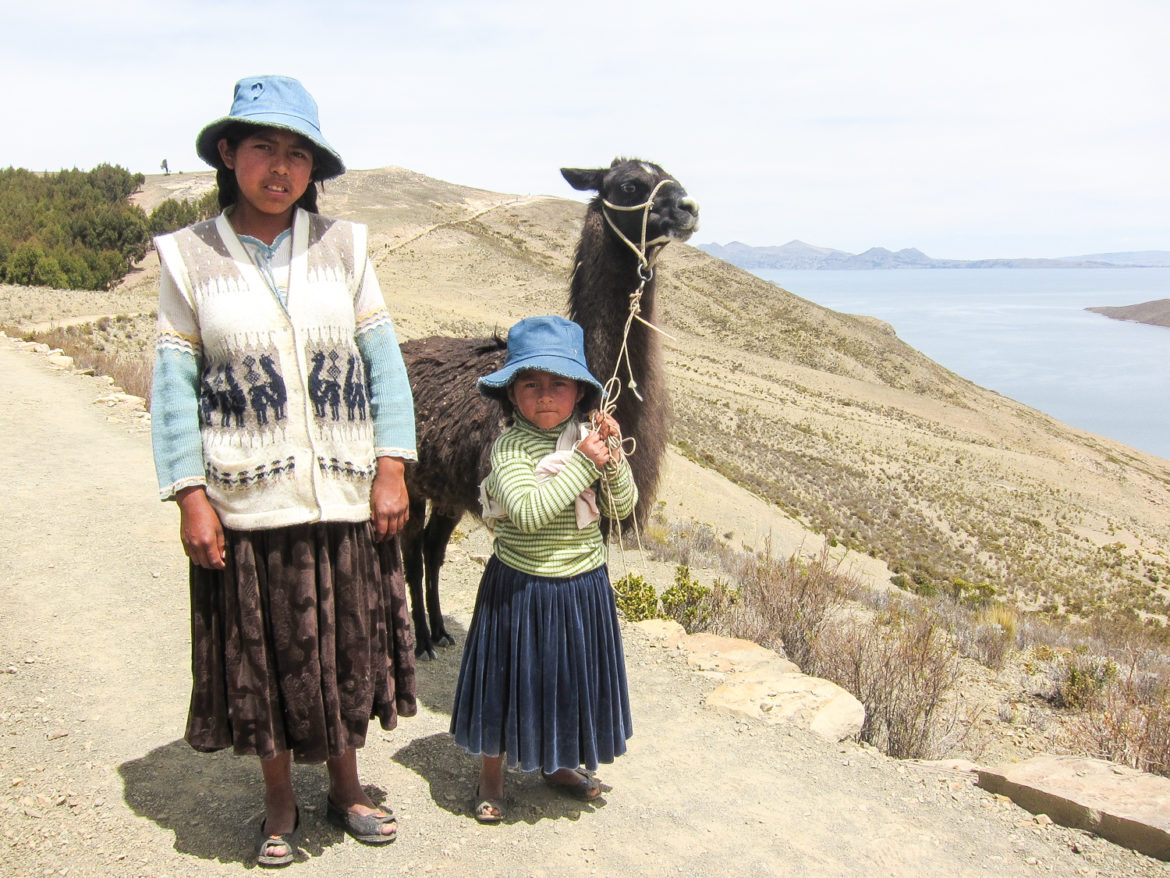According to ancient Incan history, Isla del Sol is the birthplace of the Sun God.
As if this place needed any more mystical vibes. At almost six miles long, Isla del Sol (a.k.a. “Island of the Sun”) is the largest island in Lake Titicaca. It’s made up of a traditional Aymara community of roughly 800 families and over 80 Incan ruins. Like Amantani and Taquile (islands on the Peruvian side of the lake), there are no cars and no paved roads. Everyone gets around on foot. Best of all, nearly everywhere you go, there’s a gorgeous view of the lake.
We reached Isla del Sol by taking a two-hour boat ride from Copacabana with a local boat company we arranged at the waterfront. The boat arrived in Challapampa on the north end of the island where we began a four-hour hike to Yumani, the town at the south end.
Most tourists visit Isla del Sol for the day and rarely venture far from the port areas.
In fact, once we began hiking further inland, we practically had the island to ourselves. We met up with one other couple from England who invited us to join them for a few miles. As we’d hardly run into anyone else, we happily obliged. They had brought their backpacks and tents, intending to stay overnight. The island seemed eerily quiet so we could only imagine how peaceful (or desolate) it must feel once the sun goes down.
Like other inhabited islands in Lake Titicaca, the people who live here depend primarily on farming for survival. The island’s dry, hilly terrain doesn’t seem particularly conducive to growing much. Far from being optimal farmland, even the cows, sheep and pigs wandering around seem strangely out of place. But clearly, the islanders (and animals) have managed to make it work.
In addition to farming, tourism is an additional source of income.
We walked past various archaeological sites along the way, each requiring a nominal entry fee. The Huellas del Sol (“Footsteps of the Sun”) are natural markings resembling the alleged sun’s footprints on the ground. While the Inca Table is an ancient stone platform previously used for human sacrifices and religious rituals.
Continuing on, we encountered a teenage girl with her younger sister and their pet llama. Neither spoke English, but we eventually realized they wanted us to take their photo. As soon as we did, the little girl exclaimed, “pagame!” (“pay me!”) Seems these young entrepreneurs had found a way to cash in on tourism as well.
After a full day of wandering and incredible views, we made our way back to the island’s port and inhaled some delicious fried egg and tomato sandwiches from a food stand. With sore muscles and full tummies, we sat back and soaked up the warm rays of the sun. Enjoying one last moment before bidding farewell to the magical Island of the Sun.

